SWEDISH SOUTH ASIAN STUDIES NETWORK
Department of History and Anthropology of Religion (including Judaism and Indic Religions), Centre for Theology and Religious Studies, Lund University
Address: Allhelgona Kyrkogata 8, 223 62 Lund, Sweden
Web page: http://www.teol.lu.se/forskning/forskarutbildningsamnen/
religionshistoria-inklusive-indiska-religioner-och-judaistik/
– Indic Religions
– Psychology of Religion
Indic Religions
Contact person: Professor Olle Qvarnström, phone +46 (0)46 222 90 45. Personal web page.
On 16 May 2003, the Faculties of Humanities and Theology at Lund University decided to establish a new professorship in History of Religions,
concentrated on Indic religions (Hinduism, Buddhism, Jainism, and Sikhism).
In May 2005 Lund University appointed Olle Qvarnström Professor
in History of Religion with special emphasis on Indic Religions (Hinduism,
Buddhism, Jainism and Sikhism), to head the emerging Indic Religions
Division. He was installed as Professor on Friday 21 October 2005.
Indic Religions is a major contribution to the overall effort of Lund
University to promote research and education on South Asia. It focuses
on the study of Hinduism, Buddhism, Jainism and Sikhism.
This divison, the first of its kind at a Swedish university, plans for
courses up to D-level, Masters level courses and PhD training.
On 11 February 2010, the Vice Chancellors at Lund University (LU) and the University of Gothenburg (GU) decided to give grants to a number of joint projects in order to strenghten the collaboration between the two universities. More information (only in Swedish).
One of the projects relates to the establishment of a strong national platform for the study of South Asian religions at LU and GU. An application for this project came from the Dept. of History and Anthropology
of Religion (through Prof. Olle Qvarnström and Dr. Kristina Myrvold), and the Dept. of Literature, History of Ideas, and Religion (LIR), University of Gothenburg (through Prof. Åke Sander, Dr. Daniel Andersson and Dr. Clemens Cavallin).
The grant /SEK 150 000) was used to develop cooperation in education, course work and research, and to formalise and make common their already existing exchange programmes with three North Indian universities, Punjabi University in Patiala, Banaras Hindu University (BHU) in Varanasi, and Jadavpur University in Kolkata.
During 2010, researchers and students at both universities organised planning meetings to discuss the continued work. The ambition is to build on strong profile areas that have been developed at the respective universities. In Gothenburg, LIR is for example involved in a major interdisciplinary project on Myth and Narrative, whereas in Lund, research in Sikh and Punjabi studies has become strongly established, not the least through a Nordic collaboration project on Sikh Identity Formation. The important networking role of SASNET, based at Lund University, was also pointed out in the successful application.
 From the spring semester 2011, Lund University and Gothenburg University run introduce a new and exciting 15 ECTS field course in Religious Studies.
From the spring semester 2011, Lund University and Gothenburg University run introduce a new and exciting 15 ECTS field course in Religious Studies.
The course is organized in cooperation between the Dept. of History and Anthropology
of Religion (including Judaism and Indic Religions) at Lund University, and the Dept. of Literature, History of Ideas and Religion at Gothenburg University. The course is divided into two parts: firstly the students explore different methods and theories of conducting fieldwork in Religious studies and prepare minor research projects. Secondly the students carry out their projects in the field and write research reports. The field work can be conducted anywhere, but the two departments at Lund University and Gothenburg University provide supervision for those who travel to India. Students can attend the course at either of the two universities.
The course has been launched during the spring 2011. From Lund University, it is coordinated by the researchers/teachers Kristina Myrvold, Pierre Wiktorin, Jürgen Offermanns and Katarina Plank.![]()
More information in the course folder (only in Swedish)
Earlier research on Indian religions at the department
The interest in Indic religions is however nothing new at the Department of History of Religions at Lund University. Already in 1946 Sten Rodhe defended his doctoral thesis ”Deliver us From Evil. Studies on the Vedic Ideas of Salvation”, which was a comparative study between Hinduism and Christianity. Sten Rodhe worked for many years as a teacher of religion in Sweden, and wrote several text books dealing with Indian religions. He was deeply influenced by Bede Griffiths, a British Benedictine friar who created an ashram, Shantivanam, in South India Sten Rodhe published a book on Griffith in 2002, ”Bede Griffiths – en pionjär i nutida religionsdialog”, Proprius).
Carl Gustav Diehl (1906-1995) defended his doctoral dissertation at the department in 1956. The thesis was named ”Instrument and Purpose. Studies on Rites and Rituals in South India”, and was based on research carried out in Tamil Nadu, India, where he had been residing and working as a Swedish missionary since 1932. Between 1954 and 1959 he was working at the department in Lund, and after that he spent some years at Uppsala University, before returning to India in 1967 to become Bishop for the Tamil Evangelical Lutheran Church (T.E.L.C.) in Tranquebar (today called Tarangambadi). More information available in a paper by Sofie Johansson, Uppsala University, based on Carl Gustav Diehl’s and other Swedish missionaries archives. Go for the paper (as a pdf-file).
Ongoing Research connected to South Asia
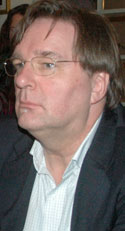 • Within the Department of History of Religions, approximately
one-third of the doctoral projects relate to Indic Religions, forming
an active and lively seminar headed by Professor Olle
Qvarnström, co-ordinator of the Indic Religions division.
He has conducted extensive research on Hinduism, Buddhism and Jainism,
especially philosophical and theological traditions, their doctrinal system
and praxis, mutual influence and conflict. He has served as Professor
in Sanskrit and Jainism at the University of Toronto, Canada, and recently
at Universität Leipzig, Germany. He has also been research scholar
and lecturer at several other universities in Europe and the United States,
including Oxford, Harvard and Berkeley. His latest publication is ”The
Yogasastra of Hemacandra. A Twelfth Century Handbook on Svetambara Jainism”
(Harvard University Press 2002).
• Within the Department of History of Religions, approximately
one-third of the doctoral projects relate to Indic Religions, forming
an active and lively seminar headed by Professor Olle
Qvarnström, co-ordinator of the Indic Religions division.
He has conducted extensive research on Hinduism, Buddhism and Jainism,
especially philosophical and theological traditions, their doctrinal system
and praxis, mutual influence and conflict. He has served as Professor
in Sanskrit and Jainism at the University of Toronto, Canada, and recently
at Universität Leipzig, Germany. He has also been research scholar
and lecturer at several other universities in Europe and the United States,
including Oxford, Harvard and Berkeley. His latest publication is ”The
Yogasastra of Hemacandra. A Twelfth Century Handbook on Svetambara Jainism”
(Harvard University Press 2002).
Olle Qvarnström has further arranged two major international conferences
on Jainism and Early Buddhism, the last of which was held in Lund in 1998,
and he has been avtively involved in establishing SASNET at Lund University.
Prof. Qvarnström is involved in several ongoing research
projects: ![]()
• Studies
in Indian Doxography: Early Buddhist and Jaina Critique of Samkhya Philosophy.
•
The Øresund
Indic Manuscript Project, in collaboration with Associate
Professor Kenneth Zysk (photo
to the right), Head of the Indology section at
the Dept.
of Cross-Cultural and Regional Studies, University of
Copenhagen, Denmark.
• The
Initiative for European Cooperation on Jaina Studies,
in collaboration with Peter Flügel,
Department for the Study of Religions, Faculty of Arts and Humanities,
School of Oriental and Asian Studies (SOAS), University of London, UK; Erik
Seldeslachts och
Eva De Clercq, Indology
section at the Dept. of Languages and Cultures
of South and East Asia, Ghent University, Belgium; Kornelius
Krumpelmann, Universität
Münster, Germany;
Julia Hegewald, Ruprecht-Karls-Universität
Heidelberg, Germany; and Nalini Balbir, l’Université Paris-3,
France. Every year the group organises International Jaina
Studies Workshops.
•
Jaina Paintings at Ellora, in collaboration
with Niels Hammer. More information below.
• Buddhist Manuscripts in the Schøyen
Collection, in collaboration with Peter
Skilling, International
Centre for Buddhist Studies, Bangkok, Thailand; Sieglinde
Dietz, Georg-August-Universität, Göttingen, Germany;
and Jens Braarvig, Department of Culture
Studies and Oriental Languages (IKOS), University of Oslo, Norway. More
information about the Schøyen Collection.
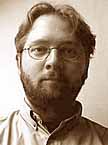
 •
Dr. Martin Gansten,
primarily engaged in research on Classical Hinduism, defended his doctoral
thesis project on astrology and other Hindu divination techniques, named
”Patterns of Destiny: Hindu Nadi Astrology”,
dealing with a South Indian form of Divination/Astrology, so-called nadi-reading,
on Tuesday 30 September 2003. Read
abstract.
•
Dr. Martin Gansten,
primarily engaged in research on Classical Hinduism, defended his doctoral
thesis project on astrology and other Hindu divination techniques, named
”Patterns of Destiny: Hindu Nadi Astrology”,
dealing with a South Indian form of Divination/Astrology, so-called nadi-reading,
on Tuesday 30 September 2003. Read
abstract.
Martin Gansten also translated and published Bhagavadgita,
as mentioned above, in 2001.
In November 2004 Martin Gansten was given a three-years grant (2005-07)
from the Swedish Research Council for a project on Mokshopaya:
myth and philosophy in a Hindu didactic poem. The project
is carried out in collaboration with Institut
für Indologie
und Südasienwissenschaften, Universität Halle-Wittenberg,
Germany; and Il Dipartimento
di Studi Orientali, La Sapienza University
of Rome, Italy. More
information on the project.
Martin Gansten frequently collaborates with a colleague at Åbo
Akademi in Finland, Dr.
Måns
Broo who defended his doctoral dissertation ”As
Good as God. The Guru in Gaudiya Vaisnavism” in 2003. In
2005 Gansten and Broo published a book with their translations from Sanskrit
into Swedish of the 12 earliest Upanishads (Brihadaranyaka,
Chandogya, Taittiriya, Aitareya, Kaushitaki, Kena, Katha, Isha, Shvetashvatara,
Mundaka, Prashna and Mandukya). The book, titled ”De
tidiga upanisaderna”,
was published by Nya Doxa (photo to the right).
More
information on Martin Gansten’s books.
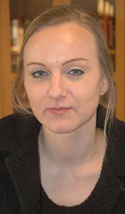 • Dr. Kristina
Myrvold (photo to the right) defended her doctoral dissertation titled ”Inside
the Guru's Gate: The Ritual Uses of Texts among the Sikhs in Varanasi”, on Thursday 20 December 2007.
The thesis deals with Sikh rituals in Varanasi, where she has conducted fieldwork
for several years. Her study focuses on religious attitudes towards the
Sikh scripture and the ritual use of texts. Faculty opponent will be Assistant Professor Michael Nijhawan, Dept. of Anthropology,
South Asia Institute (SAI), University of Heidelberg, Germany. More information, with an abstract.
• Dr. Kristina
Myrvold (photo to the right) defended her doctoral dissertation titled ”Inside
the Guru's Gate: The Ritual Uses of Texts among the Sikhs in Varanasi”, on Thursday 20 December 2007.
The thesis deals with Sikh rituals in Varanasi, where she has conducted fieldwork
for several years. Her study focuses on religious attitudes towards the
Sikh scripture and the ritual use of texts. Faculty opponent will be Assistant Professor Michael Nijhawan, Dept. of Anthropology,
South Asia Institute (SAI), University of Heidelberg, Germany. More information, with an abstract.
The day after the dissertation, Kristina was interviewed by the Lund University’s Student Union magazine Lundagård. The article was titled ”Att halka rätt”. Read the article (as a pdf-file, in Swedish only).
Before coming to Lund Univeersity, Kristina Myrvold
studied at the Department
of Religious Studies and Theology, Karlstad University, and she still keeps the relation by teaching courses in Indian religions at Karlstad University. During the academic year 2002/03
Myrvold was a visiting scholar at the Center
for Sikh and Punjab Studies, University of California (UCSB), Santa Barbara,
US.
In 2005, she organised a workshop on Sikhism at Lund University, in collaboration with the Centre for Sikh and Punjab Studies, UCSB, and in 2006,
Kristina Myrvold and her husband Harpreet Singh
again spent their time at the Center
for Sikh and Punjab Studies in Santa Barbara, this time on a Fulbright scholarship. In the Fall 2006, back in Lund Kristina taught a 5 credits course on Sikhism, the first course
of its kind in the Scandinavian countries. Kristina Myrvold was also one of the two initiators for the academic journal Chakra
– tidskrift för indiska religioner, published at the department. This magazine was
launched in March 2004, and in collaboration with the department, Chakra organised a conference on "Ritual Practices in Indian Religions and Context" in December 2004 (more information about the conference).
More information on Kristina’s personal
web page
In her current research, Dr. Myrvold focuses on religious practices and worship among the Sikhs in Punjab and in different diasporic settings, focusing on Sikh katha – oral and textual expositions of Guru Granth Sahib – in local and translocal contexts. She investigates contemporary manifestation of katha and which functions traditional and new forms of religious expositions have for understanding of the teaching and identity of the Sikh scripture, especially among the second generation of Swedish Sikhs. Her theoretical interests are primarily directed towards anthropology of religion, performance and ritual studies, emic historiography, and religious language and uses of texts.
In October 2008, Kristina Myrvold was given a three-years grant (2009-11)
from the Swedish Research Council for this project, now titled ”Translating the Guru’s Words to Local and Translocal Contexts: Oral and Written Exegesis among Contemporary Sikhs”.
Abstract: The canonized Sikh scripture, Guru Granth, is by many Sikhs believed to manifest divine words and embody the teaching and revelatory experiences of their historical human gurus. The Sikhs have also taken the concept of a sacred scripture much further than any other religious tradition by treating the Guru Granth as a personified guru. Although an extensive migration from the “homeland” Punjab has increased the cultural and linguistic diversity in the Diaspora, the Sikhs continue to ritually use their scripture in the original script and language. The means to overcome the limitations posed by a closed canon is to create oral and written katha - religious “story-telling” or expositions on the Sikh scripture and history. The exegetical tradition is a significant aspect of the Sikh religious life which has been neglected in the international study of Sikhism. During the last decades the Sikhs have also taken active use of modern media to transmit new forms of expositions through translocal networks. Based on textual analyses and field work in the Punjab and in Sweden the project aims at investigating contemporary manifestation of Sikh katha and which functions traditional and new forms of expositions have for understanding of the teaching and identity of Guru Granth, especially among the second generation Swedish Sikhs. The study will illustrate how Sikhs are interconnected through exegetical practices and culturally translate interpretations of the Sikh teaching to a changing world.
In 2009, Kristina Myrvold was one of a number of Nordic researchers that were granted Euro 600,000 from the Joint Committee for Nordic Research Councils for the Humanities and the Social Sciences (NOS-HS) for the Nordcorp project ”Sikh Identity Formation: Generational Transfer of Traditions in the Nordic Countries”. The project leader is Kristina Myrvold, and other Nordic participants are Prof. Knut Jacobsen at Bergen University, Dr. Ravinder Kaur at Roskilde University, Prof. Hanna Snellman at University of Jyväskylä, and PhD Candidate Laura Schwöbel at University of Jyväskylä.
Project abstract: The research project investigates generational transfer of traditions and identity formation processes among one visible minority group in the Nordic countries: the Sikhs from Punjab in India. From the general presumption that migration implies reconstruction of identities, this project explores the various strategies by which Sikh migrants preserve and transmit religious, cultural and linguistic traditions. Further, the project examines how young Sikhs with multicultural and transnational life-styles negotiate between contradictory perspectives surrounding them and how they gravitate towards religious identification in attempts to carve out a place for themselves in the Nordic societies. The project brings together five scholars from Denmark, Finland, Norway and Sweden who from a shared research framework will explore how the second generation shapes understanding of individual and collective identities in relation to many different Òcultural othersÓ in the social fields of home, school, religious community and on the Internet. The project will contribute new knowledge of how migrants mobilize efforts to understand difference, maintain traditions, and fashion new identities on their journey to becoming true citizens of the multi-cultural societies. ![]()
Dr. Myrvold has also been involved in organising two workshops on Sikh and Punjab Studies at Lund University, in March 2005 (more information), and in 2008, and then a full-scale three-day conference on ”Sikhs in Europe. Migration, Identity and Translocal Practices” on 16–18 June 2010. More information on the 2008 and 2010 workshops below.
 • PhD candidate Katarina
Plank (photo to the right) specialises in Buddhist studies. She will defend her doctoral dissertation entitled ”Insikt och närvaro – akademiska kontemplationer kring buddhism, meditation och mindfulness” (Insight and Presence – Academic Contemplations on Buddhism, Meditation and Mindfulness) on Friday 3 June 2011, at 13.15. The faculty opponent will be Professor Knut Jacobsen from the Department of Archaeology, History, Cultural Studies and Religion (AHKR), University of Bergen. Venue: Auditorium (hall 206), main University building,Universitetsplatsen, Lund.
• PhD candidate Katarina
Plank (photo to the right) specialises in Buddhist studies. She will defend her doctoral dissertation entitled ”Insikt och närvaro – akademiska kontemplationer kring buddhism, meditation och mindfulness” (Insight and Presence – Academic Contemplations on Buddhism, Meditation and Mindfulness) on Friday 3 June 2011, at 13.15. The faculty opponent will be Professor Knut Jacobsen from the Department of Archaeology, History, Cultural Studies and Religion (AHKR), University of Bergen. Venue: Auditorium (hall 206), main University building,Universitetsplatsen, Lund. ![]()
The thesis
focuses on the international lay meditation movement of Vipassana teacher
S N Goenka and in particular on lay meditation practices in Sweden.
Abstract: The purpose of this study is to investigate how a religious tradition changes when transposed to a new context: how it is received and incorporated in its new context and how individuals in Sweden perceive and make use of this tradition. This is done by highlighting the development of insight meditation, Vipassana, and more specifically, the Burmese practice lineage originating from the Burmese lay meditation teacher U Ba Khin and his student S N Goenka. The study gives a broad and rich depiction of contemporary Buddhist insight meditation (Vipassana), its historical conditions as well as the reception of meditation in religious and secular contexts in Sweden. The study aims to contribute to the understanding of new religious movements, Buddhist meditation and religious change in contemporary Swedish society. It wishes also to participate in an in-depth critical discussion of the growing use of mindfulness as a therapeutic treatment.
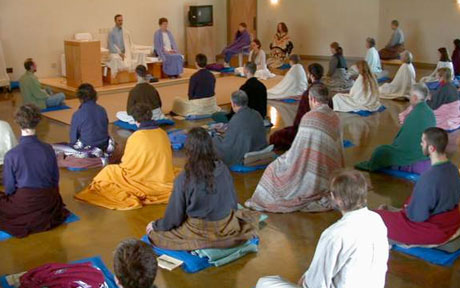 In Sweden several groups teach meditation with a more or less Buddhist foundation, where the meditation practice can be said to be either “embedded in”, or “disembedded of” Buddhist tradition. Among the approximately 40 Buddhist groups in the country (comprising around 30,000 Buddhists of mainly Asian origin), Buddhist mindfulness (sati) in the form of Vipassana meditation is taught in Asian temples by monks and by convert groups. The majority of users seem to relate in a liberal way in their interpretations and usages of meditation and their religious inclinations show both modern and postmodern features. Mindfulness, as an East-West hybrid, has become very popular and can be found among many New Age groups as well as other groups in the alternative health sector, where religiosity is expressed in terms of health and whose purpose is expressed in finding one’s own inner potential. Hybrid mindfulness can also be found in more pronounced secular environments, for example, in the Swedish health care sector, where it is applied in a clinical perspective designed to treat specific symptoms. Here, mindfulness is taught – and even sold expensively – in a ritual context that emphasizes the individual and the self, emphasizes health benefits and is closely linked to powerful economic forces. Mindfulness in this respect tends to imply creating a state of sensuality and wellbeing. Practice mimics to some extent Buddhist meditation, but there are also significant differences, particularly in the setting of the ritual context.
In Sweden several groups teach meditation with a more or less Buddhist foundation, where the meditation practice can be said to be either “embedded in”, or “disembedded of” Buddhist tradition. Among the approximately 40 Buddhist groups in the country (comprising around 30,000 Buddhists of mainly Asian origin), Buddhist mindfulness (sati) in the form of Vipassana meditation is taught in Asian temples by monks and by convert groups. The majority of users seem to relate in a liberal way in their interpretations and usages of meditation and their religious inclinations show both modern and postmodern features. Mindfulness, as an East-West hybrid, has become very popular and can be found among many New Age groups as well as other groups in the alternative health sector, where religiosity is expressed in terms of health and whose purpose is expressed in finding one’s own inner potential. Hybrid mindfulness can also be found in more pronounced secular environments, for example, in the Swedish health care sector, where it is applied in a clinical perspective designed to treat specific symptoms. Here, mindfulness is taught – and even sold expensively – in a ritual context that emphasizes the individual and the self, emphasizes health benefits and is closely linked to powerful economic forces. Mindfulness in this respect tends to imply creating a state of sensuality and wellbeing. Practice mimics to some extent Buddhist meditation, but there are also significant differences, particularly in the setting of the ritual context.
Katarina Plank
also teaches both at Lund university and at the School of Education
and Communication (HLK), Jönköping
University, on Indian religions, and about religion and religiosity in a changing world. Her main research interests are buddhism, meditation, mindfulness, new religiosity and current religious manifestations in Sweden and Asia. samtida religiösa yttringar i Sverige och Asien.
Katarina
is currently involved as course leader for the new India course launched by the universities of Lund and Gothenburg in the spring 2011, more information. ![]()
• PhD Candidate Sumana Ratnayaka is working on doctoral thesis project titled ”Mindfulness: Classical and Modern Interpretations”. Mr. Ratnayaka comes from Sri Lanka, where he has been an active Buddhist monk for 25 years. The research project consists of two major parts:
1. A historical and philological study of the concept of “bhavana” (“cultivation”, “development”) and its semantic development, with special reference to (anu-, pati-) sati (“mindfulness”), based on the Pali Canon of Theravada Buddhism and its commentaries and subcommentaries.
2. An anthropolical study of “mindfulness” as practised by monks and nuns as well as lay practitioners in Sri Lanka today. Interviews will be conducted in Colombo and Kandy at institutes such as Vidyodaya pirivena and Vidyalankara pirirvena, and at meditation centres, such as Kanduboda Vipassana Meditation Centre and Nillambe Meditation Centre.
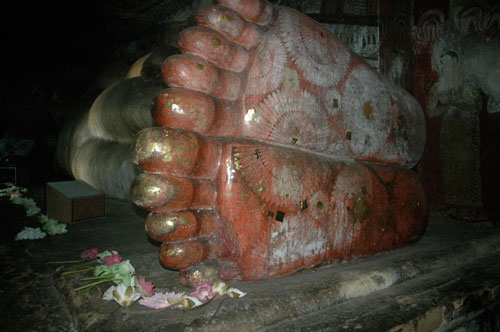 Project abstract: During the 19th century, Western scholars and Buddhist practitioners reinterpreted the Buddhist teaching. This rerendering of Buddhism, which the German Indologist Heinz Bechert termed ”modernized Buddhism”, stems in particular from the political and religious developments in Sri Lanka during the late 19th century, including Christian mission, western interpretations of Buddhism and the emergence of an urban western educated middle class. Modernized Buddhism emphasized rational and philosophical aspects, and viewed meditation as the central practice. Such interpetations of Buddhism – Theravada as well as Zen and Tibetan – were gradually introduced to the West, and after the Second World War, Buddhism and its various forms of meditation came to be practised. Buddhism was thus being objectified, separated from its social and religious context, and individualized. Meditation suited the therapy culture of the West and its focus on the well-being of the individual.
Project abstract: During the 19th century, Western scholars and Buddhist practitioners reinterpreted the Buddhist teaching. This rerendering of Buddhism, which the German Indologist Heinz Bechert termed ”modernized Buddhism”, stems in particular from the political and religious developments in Sri Lanka during the late 19th century, including Christian mission, western interpretations of Buddhism and the emergence of an urban western educated middle class. Modernized Buddhism emphasized rational and philosophical aspects, and viewed meditation as the central practice. Such interpetations of Buddhism – Theravada as well as Zen and Tibetan – were gradually introduced to the West, and after the Second World War, Buddhism and its various forms of meditation came to be practised. Buddhism was thus being objectified, separated from its social and religious context, and individualized. Meditation suited the therapy culture of the West and its focus on the well-being of the individual.
One central aspect of Buddhist meditation, as found in the Theravada tradition as well as in Zen and Tibetan Buddhism, is what is termed “mindfulness”. This concept and its practical applications have made an enormous impact on the West, being adopted both by potential converts and people with a general interest in Buddhism, and by the academic/scientific community, integrating it within psychology and psychotherapy. Accordingly, “mindfulness” has been viewed as a therapeutic technique. This has led to an investigation by the Swedish medical authorities as to the spread of this and other methods, classified by Socialstyrelsen as “AKM” (Alternativ- eller Komplementärmedicin). In connection with this, the Department of Psychology plan to conduct clinical experiments on mindfulness, and the Centre for Theology and Religious Studies (CTR) propose to study “mindfulness” among Buddhist converts and sympathizers as well as in the context of developing AKM-practices in Swedish society.
“Mindfulness” has thus in the West (and to a certain degree even in Asia, due to western influence) been equated with “meditation” and viewed as a technique, a therapeutic method for personal development, compatible with modern science.
PhD Candidate
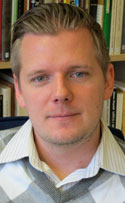 Andreas Johansson is working on a dissertation project entitled ”The Construction of Religio-Nationalism – The struggle for religious minority organizations”
(preliminary title). He is being supervised by Prof. Olle Qvarnström.
Andreas Johansson is working on a dissertation project entitled ”The Construction of Religio-Nationalism – The struggle for religious minority organizations”
(preliminary title). He is being supervised by Prof. Olle Qvarnström. ![]()
Before joining as a PhD student in 2009, Andreas completed a Masters programme in Islamology at the same department (and before that he studied History of Religion and Political Science).
His main research interest has been Political Islam in South
Asia; how Muslim parties use Islamic rhetoric; and the influence of Sayyid
Abu’-A’la
Mawdudi on Muslim parties in South Asia. In November
2006 Andreas carried out a field work in Sri Lanka to study the main
Muslim party in the country, Sri Lanka Muslim Congress. His Masters thesis in the Fall 2007 was entitled ”A Third Way.
The Sri Lanka Muslim Congress
discourse struggle between
Islamism and Nationalism”. Read the full thesis (as a pdf-file)
Andreas’ research is based upon two field work trips in 2006 and 2011 respectively, both of them completed with the help of the American Institute of Sri Lankan Studies.
Abstract PhD project: Andreas will discuss the discourse struggle between state-nationalism and religion that can merge within organizations in a minority situation. One of his fields of study is South Asia, where he analyzes the political party the Sri Lanka Muslim Congress rhetoric’s and its relation towards state-nationalism and religion. The focus is on the struggle within these discourses, something which is interesting because the civil war in Sri Lanka has just ended and the context is unique and new for the country.
The Sri Lanka Muslim Congress (SLMC) has been a part of the Sri Lankan parliament since 1989 and in recent year scholars have noticed ”the Muslim factor” in Sri Lankan politics. Earlier research has concentrated on the conflict in Sri Lanka and its effects on the Muslim community. The present thesis focuses on the SLMC’s organization and speeches in parliament. The aim of this thesis is to analyze the construction of the politics of the Sri Lankan Muslim Congress and the constructions of their organization and the guidelines. The second aim it to see if there is a discursive struggle between Sri Lankan nationalism and Islamism.
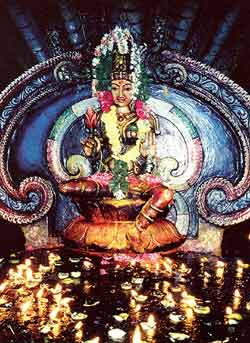 •
Dr. Sidsel Hansson
defended her doctoral thesis ”Not
Just Any Water: Hinduism, Ecology and the Ganges Water Controversy”,
on 28 September 2001. More information on
the thesis.
•
Dr. Sidsel Hansson
defended her doctoral thesis ”Not
Just Any Water: Hinduism, Ecology and the Ganges Water Controversy”,
on 28 September 2001. More information on
the thesis.
An article by Hansson, ”To
clear sins and wash clothes. Gender relations on the Ganga shore in
Varanasi” (in
Swedish though), appeared in 2002 in the volume ”Stigma,
Status och Strategier” (Studentlitteratur, edited by Catharina
Raudvere).
She has, together
with Eva Hellman, Dept
of History of Religion, Uppsala University, been involved in a
research project on ”Gender and Religious
activism in South Asia: A study of Christian, Hindu, and Muslim women’s
organisations”.
This project was given planning grants from SASNET in 2001, and a continuation
in 2002. Within the project Sidsel Hansson has initiated studies focusing
on rural women’s activism in India. With a theoretical framework
these ethnographic micro-studies raise questions about the impact
of politicised religion and globalisation on marginalised women’s
agency in environmental risk areas.
Since
the Spring 2004 Sidsel Hansson is based at the Centre
for East and South East Asian Studies (ACE), Lund University, where
she holds a post-doc position. Currently, she is working on a project dealing with
hinduisation and women’s
groups within the environmental movement in Rajasthan. In January
2004 she was given a three-years grant from Sida/SAREC to carry out
a major research project on this issue. The project was called: ”Gender,
Education, Religion, and Environment. Women's activism and self-education
in an environmental risk district in northwest India”. More
information.
The project was carried out in collaboration with Pernille
Gooch, Division of Human Ecology,
Dept. of Ethnology, and the MA student Behnoush
Payvar, Centre for East and South East
Asian Studies (South Asia track).
Project Abstract: The
project studies the nexus of social, cultural and religious factors
influencing underprivileged women’s access to educational resources and civil society agency
in an environmental risk region. It discusses the most important factors
obstructing/facilitating the process. In order to gain an understanding
of the dynamics it is essential to look into women’s efforts to
organise themselves at the micro level. The analysis focuses on the women
as actors, and on the strategies that they use. A main hypothesis in the
project is that women’s empowerment depends on their capacity to
strategically use their environmental knowledge which affords status
in some contexts, and their religious traditions which affords legitimacy
in other contexts. Data from the ethnographic study will be compared
with data from secondary sources in order to discuss education and gender
vulnerability in environmental risk areas and the consequent policy implications.
• Åse Piltz defended her doctoral dissertation called ”Seger åt Tibet! Den tibetanska diasporan och den religiösa nationen” (Victory to Tibet! The Tibetan Diaspora and the Religious Nation), on Saturday 22 October 2005. The thesis focuses on images of Tibet, among Westerners as well as among Tibetans. Based on approximately one year of fieldwork in the former British Hill station, it also deals with the politics of the Central Tibetan Administration (CTA) and some of its political and social implications for the exiled Tibetan youth living in Dharamsala, India. Faculty opponent was Dr. Axel Kristian Strøm, Dept. of Social Anthropology, University of Oslo, Norway. More information with abstract.
• PhD candidate Ulla Thoresen is working on a project on the Tulku institution in Vajrayana Buddhism. She defended her Licentiate thesis on ”The Tulku institution: Traditionalism and Modernity among Tibetans living in exile in India” on Friday 10 June 2005. Faculty Opponent was Dr. Axel Kristian Strøm, Dept. of Social Anthropology, University of Oslo, Norway. Read the thesis as a full text document (pdf-file).
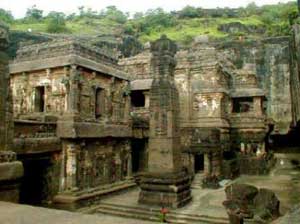 • The researcher Niels
Hammer, Orås, is involved in a research project
together with Prof. Olle Qvarnström, on documenting the Jaina
paintings at the Ellora caves in
Maharashtra, India.
• The researcher Niels
Hammer, Orås, is involved in a research project
together with Prof. Olle Qvarnström, on documenting the Jaina
paintings at the Ellora caves in
Maharashtra, India.
Niels Hammer, is an expert on Sanskrit Poetry, and in 2003 he wrote a
book titled ”The
Art of Sanskrit Poetry. An Introduction to Language and Poetics”,
that was published in India by Munshiram
Monoharlal in Delhi. It contained an introduction to the Sanskrit
language and an investigation into the relationship between the
nine basic affective states (bhava) and the form they take
in the absence of self-interest (tatasthya) according to
the theory of Indian aesthetics as developed in the Dhvanyaloka and
the Abhinavabharati. More
information about the book.
During an extensive documentation of
21 major temple and cave sites in India, Mr. Hammer took a series
of photographs, some of them depicting the Jaina cave paintings
in Ellora. These photos came to the attention of Prof. Olle Qvarnström.
As these paintings are unique, seen from the point of view of the history
of the Jaina religion, and as they display distinct artistic quality
on a par with that of Ajanta it was decided to photograph them in
extenso and subsequently to write a monograph delineating (1) historical
background, (2) rules and quality of craftsmanship as based on the
Citrasutra chapters of the Visnudharmottarapurana, and (3) artistic
and emotional aspects as based on the Natyasastra, and (4) religious
motivations and interpretations as based on such Digambara texts
as Jinasena’s Harivamsa Purana
and Adipurana.
Qvarnström and Hammer jointly visited the archaeological
heritage place in western India during the Fall 2005, and have since written
a manuscript and prepared the pictures for publication. A paper was presented at the 9th
Jaina Studies Workshop, held at the School of Oriental and African
Studies (SOAS) in London on Wednesday
21 March 2007. The paper presented in London was titled ”The
Dancing Indra: Jain Cave Paintings from Ellora”.
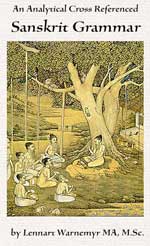 • MA
and MSc Lennart
Warnemyr has done research on early
Mahayana Buddhism, as viewed through Chapter 32 of the Samadhirajasutra.
Warnemyr has translated the work into Swedish and English from the Buddhist
hybrid Sanskrit original. He has then continued to analyse the text and
put it into context. Lennart Warnemyr has a knowledge both of Sanskrit
and Pali, and has participated in the Seminary of Indic Religions, running
at the department. He has also published ”An Analytical
Cross Referenced Sanskrit Grammar”, a book that is available
through his personal web page.
• MA
and MSc Lennart
Warnemyr has done research on early
Mahayana Buddhism, as viewed through Chapter 32 of the Samadhirajasutra.
Warnemyr has translated the work into Swedish and English from the Buddhist
hybrid Sanskrit original. He has then continued to analyse the text and
put it into context. Lennart Warnemyr has a knowledge both of Sanskrit
and Pali, and has participated in the Seminary of Indic Religions, running
at the department. He has also published ”An Analytical
Cross Referenced Sanskrit Grammar”, a book that is available
through his personal web page.
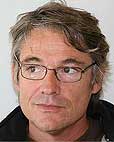 • PhD Jürgen
Offermanns defended his doctoral thesis on ”Der
lange Weg des Zen-Buddhismus nach Deutschland: vom 16. Jahrhundert bis
Rudolf Otto”, on 10 May 2002, dealing with the European
reception of Buddhism. Read
abstract.
• PhD Jürgen
Offermanns defended his doctoral thesis on ”Der
lange Weg des Zen-Buddhismus nach Deutschland: vom 16. Jahrhundert bis
Rudolf Otto”, on 10 May 2002, dealing with the European
reception of Buddhism. Read
abstract.
Dr. Offermans is now planning for a project on ”Buddhism
– a Swedish Cultural Heritage”. On 10 October
2006 he was given SEK 1 746 000 as a three-years (2007-09) grant
from the Swedish Research Council for this project. Against the background
of political, cultural and religious conditions in Sweden, he aims at describing
and analyzing the gradual establishing of Buddhism within Swedish cultural
life from the 17th Century till the beginning of the 1930s. More
information.
• PhD candidate Lisbeth Andersson is doing research on caste, gender and social issues in a South Indian Hindu movement – the Amma/Adiparashakti worship. In 2002 she published an article on this, ”When the paterfamilias turns into a Mother. On Gender relations in a South Indian temple worship” (in Swedish though), in the volume ”Stigma, Status och Strategier” (Studentlitteratur, edited by Catharina Raudvere). The project is however now dormant.
Conference on Ritual practices in December 2004
 |
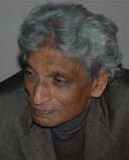 |
| Two of the key speakers at the Lund conference, Peter Flugel, School of Oriental and African Studies, University of London, and Gananath Obeyesekere, Princeton University. | |
A Nordic conference on ”Ritual practices in Indian religions and contexts” was successfully held at Lund University 9–11 December 2004. The conference was arranged by the seminars of Indian Religions and Ritual Studies at the Department of History and Anthropology of Religion, Lund University, in cooperation with the academic journal Chakra – Tidskrift för indiska religioner. 40 scholars and PhD students engaged in research concerning Indian religions (Buddhism, Hinduism, Jainism and Sikhism) and rituals took part in the conference. Keynote speakers were the anthropologists Gananath Obeyesekere, Princeton University and Elisabeth Schombucher, University of Heidelberg; and Peter Flügel, Religious Studies, School of Oriental and African Studies, University of London. Gurinder Singh Mann, Sikh and Punjab Studies, University of California at Santa Barbara, was also supposed to be a key speaker but was unfortunately at the last moment prevented from coming. Presented papers will be considered for publication in Chakra. More information on the conference.
Educational courses on Indic religions:
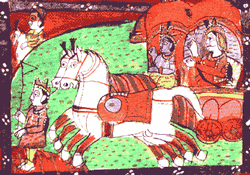 A 20 credits half-time course for beginners in Elementary
Sanskrit was held during the academic years 2003-04 and 2004-05.
The teacher was Martin Gansten.
A 20 credits half-time course for beginners in Elementary
Sanskrit was held during the academic years 2003-04 and 2004-05.
The teacher was Martin Gansten.
Since 2001 the Indic Religions Division has also offered a number of
specialised 5 credits courses on Bhagavadgita; Western
Buddhism; Yoga and Meditation in Indian
religions;
Tantra and Tantrism; Jainism,
Non-violence and Vegetarianism; and Astrology
and Divination in Indian religions.
Since 2006 a new 5 credits course on Sikhism was introduced. It was the first course on Sikhism at any Scandinavian
university, and the teaching is carried out by Kristina
Myrvold, researcher specialised on Sikh studies.
Frpom 2008, the department also offers a 5 credist course on Ethics within Indian religions.
More
information on the courses offered.
Project on Indian Religions in the Nordic countries
Professor Olle Qvarnström is part of an ongoing Nordic
project called ”Nordisk orientalism –
indiska religioner i Norden”. It aims at collaboration in
the field of Indian religions studies inte Nordic countries. Besides Qvarnström
the project group includes Torkel Brekke from the University of Oslo,
Norway; Måns Broo, Åbo Akademi, Finland; and Erik Sand, University
of Copenhagen, Denmark.
As part of this effort a workshop was held in Copenhagen on Thursday 22
September 2005. The workshop was jointly organised by the Indic Religions
division, Lund University and the Dept.
of History of Religion, Institute for Intercultural and Regional Studies,
University of Copenhagen. More information
with full programme.
Network and workshops on Sikhs in Europe
An Exploratory Workshop on ”The Sikhs in Europe. History, Religion and Representation” was held at Lund University, 13–14 June 2008. The conference was funded by the Bank of Sweden Tercentenary Foundation, the Swedish Research Council, the Swedish Council for Working Life and Social Research and the Wenner-Gren Foundation. The invited speakers included Prof. Shinder Thandi from Coventry University, UK, who talked about ”Migration and History of the Sikhs in Europe”; and Prof. David Omissi, University of Hull, UK, who talked about ”Indian Soldiers in Europe, 1914–1918”. The entire workshop was public. On the second day, discussions were held regarding possibilities for future European collaborative research projects on Sikhs in Europe. More information.
At the end of the workshop, the participants decided to establish the network Sikhs-in-Europe for the purpose of developing closer academic cooperation between students and researchers with a common interest in the Sikhs and Sikhism in Europe.
The creation of the network Sikh-in-Europe reflects a growing academic interest in the European Sikh and Punjabi diasporas. An extensive migration from the Punjab – the north-western state of India and the “homeland” of the Sikhs – in the twentieth century resulted in Sikh settlements in different parts of the world. This development attracted the scholarly attention to the Sikh religion and Sikh diasporas, especially in English-speaking countries. New patterns of migration, settlements, representations and transnational networks of the Sikhs in more recent decades have made scholars aware of the importance to undertake research studies of the Sikhs in different European contexts and the need to create academic collaborations across disciplinary and national borders. As the first step in this direction, the network Sikhs-in-Europe is an initiative to create cooperation between scholars who come from a wide range of disciplines and are affiliated to different universities in Europe and beyond.
In July 2008, a new web site was established by the network, titled Sikhs-in-Europe It contains a lot of useful information about conferences etc. Go for the web site.
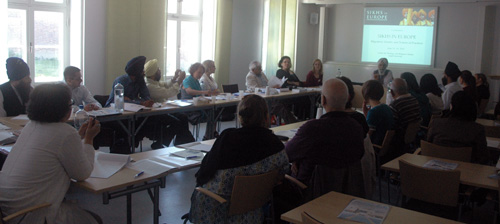 A full-scale three-day conference on ”Sikhs in Europe. Migration, Identity and Translocal Practices” was then held at Lund University, 16–18 June 2010. The aim was to gather leading scholars in the multidisciplinary
field of Sikh studies and discuss current research projects focusing on
patterns of migration, identity formations, self-representations, transmission of
traditions and translocal practices among Sikhs in different parts of Europe.
A full-scale three-day conference on ”Sikhs in Europe. Migration, Identity and Translocal Practices” was then held at Lund University, 16–18 June 2010. The aim was to gather leading scholars in the multidisciplinary
field of Sikh studies and discuss current research projects focusing on
patterns of migration, identity formations, self-representations, transmission of
traditions and translocal practices among Sikhs in different parts of Europe.
While
two conference days were dedicated to presentation and peer-review of papers by the
members of the academic network Sikhs-in-Europe, the third conference day was a
workshop for Ph.D. students affiliated to European universities, organised by Dr. Laura Hirvi, University of Jyväskylä, Finland.
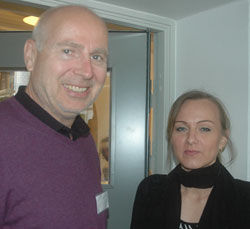
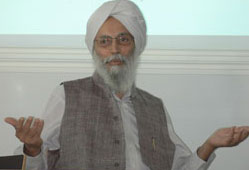 The conference was again convened by Dr. Kristina Myrvold, Lund University. Here seen with Prof. Knut Jacobsen, University of Bergen (photo to the right).
The conference was again convened by Dr. Kristina Myrvold, Lund University. Here seen with Prof. Knut Jacobsen, University of Bergen (photo to the right).
The keynote lecture on 16 June was given by Prof. Gurinder Singh Mann, Centre for Sikh and Punjabi Studies, University of Californa at Santa Barbara, USA (photo to the left). He spoke about ”Guru Nanak and the Sikh Religion: Some Reflections”, and focused on the classic 1968 monograph ”Guru Nanak and the Sikh Religion”
by Prof. W H McLeod, University of Otago, New Zeeland.
Other participants to the conference included Dr. Doris Jakobsh, University of Waterloo, Ontario, who gave a SASNET lecture in 2004 on ”Sikhs, Colonization, Gender and Ritual” (more information); Prof. Eleanor Nesbitt, University of Warwick, Coventry, UK (also Reviews Editor for the Journal of Punjab Studies); and PhD candidate Kathryn Dominique Lum, who completed Lund University’s Masters programme in Asian Studies in 2007, and is now based at the European University Institute in San Domenico di Fiesole, Italy, working on a doctoral dissertation project related to the Ravidassia Community and Identity(ies) in Catalonia, Spain (more information).
More information about the conference, including full programme.
In September 2010, the Lund University magazine LUM published an article on Kristina Myrvold’s research and the Sikhs in Europe network/conference. Read the article (written by the journalist Ingela Björk), entitled ”Asiatiska religioner i väst: Sikher i Europa”. ![]()
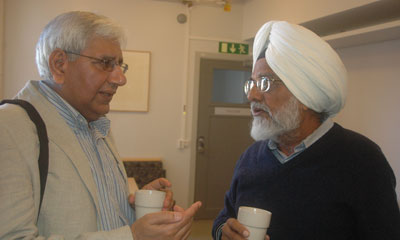 |
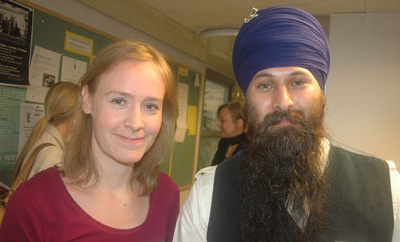 |
| Participants at the 2010 conference in Lund: Shinder Thandi, Coventry University, UK; and Swarn Singh Kahlon, independent researcher from Chandigarh, India. | Other participants: Kaveri Harriss, University of Sussex, UK; and Kamalroop Singh, University of Birmingham, UK. |
Psychology of Religion
Contact person: Professor Antoon Geels, phone: +46 (0)46222 90 54. Personal web page
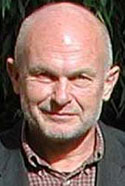 Professor Antoon Geels is an Internationally recognised
authority in the field of Psychology of Religion. Over the years he has done a lot of research connected
to South Asia, most notably on Nepal. In the last few years he has been
very active in research on different aspects of Religious Mysticicm around
the World.
Professor Antoon Geels is an Internationally recognised
authority in the field of Psychology of Religion. Over the years he has done a lot of research connected
to South Asia, most notably on Nepal. In the last few years he has been
very active in research on different aspects of Religious Mysticicm around
the World.
In October, 2001, he arranged a Symposium on ”Mysticism and Psychology”,
with the psychoanalyst and writer Dr Sudhir Kakar as key guest
(Kakar then also held a SASNET lecture on ”Globalisation and Hindu
Nationalism” – referred to at our
page on local SASNET activities).
In the Fall 2004 the department arranged a 5 credits part time course on Traditions of Mysticism, dealing with basic mystic texts from Hindu, Buddhist, and Tao traditions, including studies of specific yoga techniques and their psychological effects.
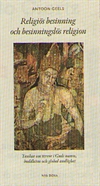 In January 2008, Prof. Geels published a book titled ”Religiös besinning och besinningslös religion. Tankar om terror i Guds namn, Buddhism och global andlighet” [Religious Sense and Senseless Religion. Thoughts About Terror in the Name of God, Buddhism, and Global Spirituality]. The book deals with the fact that even though religion can motivate people to altruistic activity in the service of mankind, it can also instigate terror attacks. When does religion become senseless?
In January 2008, Prof. Geels published a book titled ”Religiös besinning och besinningslös religion. Tankar om terror i Guds namn, Buddhism och global andlighet” [Religious Sense and Senseless Religion. Thoughts About Terror in the Name of God, Buddhism, and Global Spirituality]. The book deals with the fact that even though religion can motivate people to altruistic activity in the service of mankind, it can also instigate terror attacks. When does religion become senseless?
Several chapters are devoted to a discussion of Buddhism and its contribution to well-being. In a final chapter the author presents his ideas about global spirituality. Representatives of the five great world religions come together in order to prepare a (fictive) interreligious dialogue, focusing on controversial issues as well as on common spiritual denominators, which can lay a foundation for a new global spirituality. More information.
In 2008, Antoon Geels has also published another book titled ”Medvetandets stilla grund: mystik och spiritualitet i världens religioner” [The peaceful foundation of consciousness: Mysticism and Spirituality in the World religions]. It contains four extensive chapters on Hinduism and Buddhism. More information.
Currently, Prof. Geels has a research interest in studying Westerners visiting Indian Ashrams. In January 2008, he visited Sri Ramanasramam, an ashram in Tiruvannamalai, Tamil Nadu dedicated to spreading the teachings of Bhagavan Sri Ramana Maharshi. Many Westerners – most of them above 50 years of age – regularly return to this specific South Indian ashram. Prof. Geels intends to do more field studies to Tiruvannamalai and interview these people. More information about Sri Ramanasramam.
The journalist Göran Frankel, working for Lund University’s Communications department, made a TV documentary about Prof. Geels’ research in Tiruvannamalai for the programme Vetenskapslandet, broadcasted by Swedish TV/Kunskapskanalen in October 2008. The film can still be seen on the Internet. Go for the film, entitled ”Andlighet och stillhet i Indien”. ![]()
SASNET - Swedish South Asian Studies Network/Lund
University
Address: Scheelevägen 15 D, SE-223 70 Lund, Sweden
Phone: +46 46 222 73 40
Webmaster: Lars Eklund
Last updated
2011-05-13
